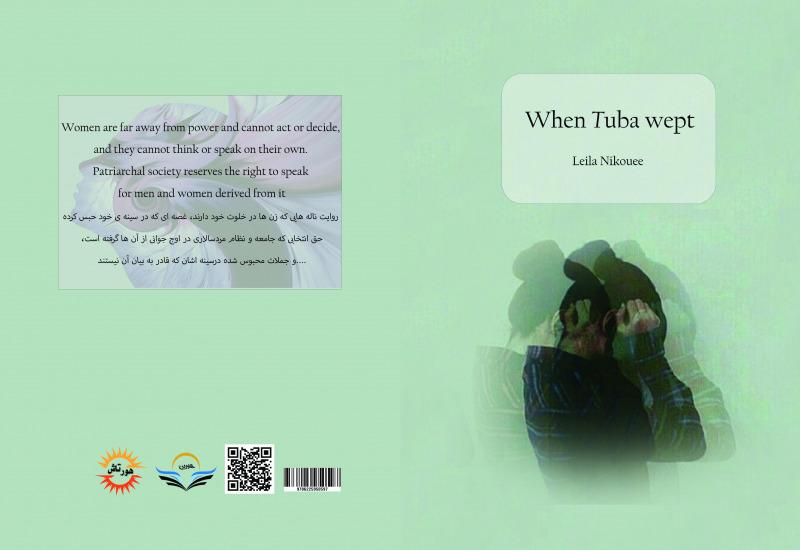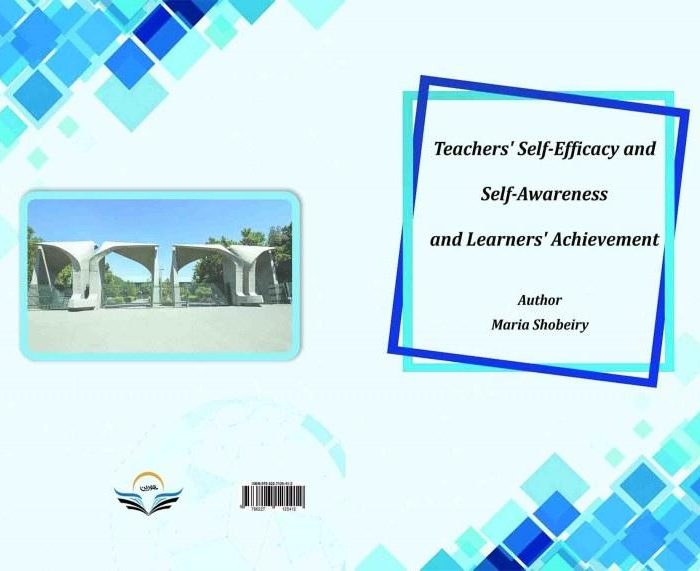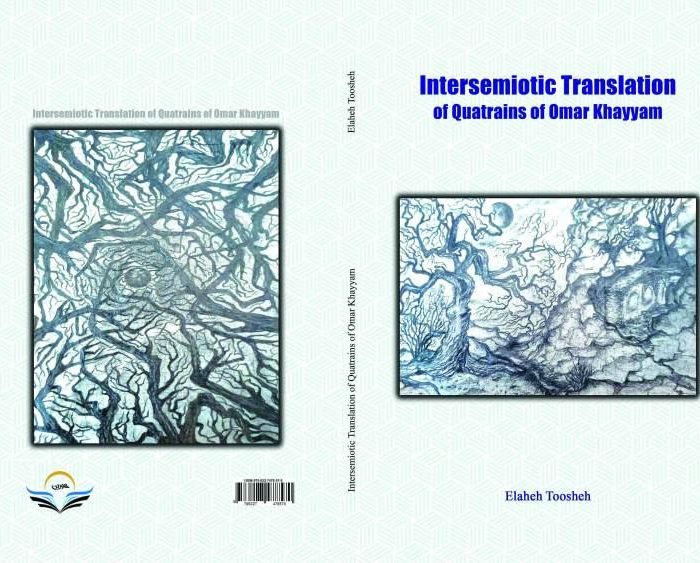کتاب When Tuba Wept
- صفحه نخست
- رشته ها
- - ادبیات و زبان های خارجی
- زبان انگلیسی
- کتاب When Tuba Wept
CONTENTS
CHAPTER ONE 9
Introduction 9
General Overview 9
Statement of the Problem 22
Significance of the Problem 24
Literature Review 25
Methodology and Approach 30
Limitations and Delimitations 32
Thesis Framework 33
Definition of Key Terms 34
CHAPTER TWO 41
Hélène Cixous and Theories of Feminisim 41
Introduction 41
A General Overview on Hélène Cixous 43
Hélène Cixous and the Notion of “écriture féminine” 46
Hélène Cixous and Law of Father 54
Intersections between Language and gender Difference 59
The Binary Structure of Masculine and Phallocentric Culture Criticism 62
Conclusion 70
CHAPTER THREE 73
Description of Cixous’s Concepts in Tuba and the Meaning of Night 73
Introduction 73
Feminine Language and Feminization in Tuba and the Meaning of Night 73
Women’s Sexuality in Tuba and the Meaning of Night 75
Conclusion 83
CHAPTER FOUR 85
Description of Cixous’s Concepts in Paradise 85
Introduction 85
Patriarchal Society 85
Women’s Sexuality in Paradise 88
Individuality in Patriarchal Community 91
Divisive Elements and the Concepts of ‘Different’ in Feminine Characters 98
Conclusion 107
CHAPTER FIVE 109
Conclusion 109
Summing Up 109
Findings 118
Suggestions for Further Studies 125
Bibliography 127
General Overview
Toni Morrison was an African American novelist who published her first novel The Bluest Eye in 1970. She wrote several novels and won numerous prizes, and she was awarded the Nobel Prize in Literature in 1993. She originally submitted the manuscript under the name Toni Morrison because it was familiar to her editor. Morrison was born and raised in Lorain, Ohio, a town populated by immigrants mainly from Europe. At her integrated school, she met children from a range of cultural backgrounds, some of whom she taught to read. She recalls that Lorain offered little in the way of spectacular scenery or architecture but has speculated that this might have proved “conducive to a fecund imagination” (Paradise 28). It is the language of the African American community of Lorain that she remembers most vividly and that would come to infuse her fiction: a powerful discourse emerged from the combination of “new language and biblical language and sermonic language and standard language” (35) heard in her hometown.
Morrison, the second of four children, speaks of her childhood as an enriching and stimulating time. When she is asked to speak about her early years, salient images and feelings resurface persistently; the sounds of her childhood had particular resonance. She recalls listening to music—both of Morrison’s maternal grandparents were musicians— being uplifted by the sound of her mother’s singing, and following the exchange of stories between family members and friends.
Memories of her father’s ghost stories are particularly vivid. Morrison’s mother Ella Ramah Willis Wofford was a homemaker and her father George Wofford was a ship welder. Both had come to Ohio from the South searching for a better life and hoping to find a space beyond the gaze of a racist white society. From her parents, Morrison learned lessons that have guided her throughout her life. Her response to racism was informed by her father, who reminded her that she did not inhabit the “imagination” of racist people. She has always looked upon the acts of racist exclusion or insult, as pitiable, from the other person and always thought that there was something deficient—intellectually, emotionally—about such people. When asked to identify sources of inspiration for her imaginative world, Morrison points to the stories and experiences of her ancestors. Personal experience rarely finds a direct route into her novels but has ignited prolonged consideration of particular concepts or focalizations.
Speaking to Anne Koenen about the conception of “self-invented” women in her fiction, such as Eva in Sula and Pilate in Song of Solomon, Morrison is reminded of an experience from her youth. She recalls being in a room with her mother, grandmother, and great-grandmother and recognizing her place as a descendant of this line of women. Morrison’s first encounters with literature came at an early age. Indeed, she has often stated that she cannot recall her pre-literate life. It would be some years, however, before she would encounter African American literature; it was not taught in the integrated school that she attended. During her teenage years, Morrison cleaned houses after school; she told Claudia Dreifus that she found some interest in using housekeeping “gadgets” that she had not used before. While some of the people she worked for were “nice,” others were “terrible.”
She drew on this experience in The Bluest Eye in her portrayal of Pauline Breedlove, a mother who, forced to raise her children in squalor, is ignored by society unless she speaks or acts in her role as a maid for a white household. Morrison graduated from high school in 1949 and moved to Washington, D.C., to attend Harvard University. Here she met her future husband, architect Harold Morrison, and joined the Harvard University Players. On her travels with the theater group, she visited the South for the first time. This experience, along with memories of her parents’ accounts, would greatly inform her fictional representations of the South. After graduating from Harvard in 1953, she went on to study English at the postgraduate level at Cornell University. Paradise is the seventh novel by Toni Morrison and the last part of the trilogy. The book was published in 1998, the first novel after Morrison was awarded the Nobel Prize. The original title of the book was supposed to be War but was later changed to Paradise by Morrison’s editor. The story is set in the 1970s in a small all-black town called Ruby. The name was chosen because of a black woman Ruby Best Morgan, a sister of the town’s most prominent men, who was the first (and the only one so far) person to die and to be buried in a new city. It narrates the story of a black community (Ruby) who migrated to the countryside where an “only-black” community was established. Families in Ruby are building what they consider a nationalistic project no one can escape from: “He can’t fail at what he is doing. None of us can. We are making something” (240).
The book is divided into several chapters, each named after the significant woman whom the story is about (Ruby, Mavis, Grace, Seneca, Divine, Patricia, Consolata, Lone, and Save-Maria). The story is not told from their point of view but the narrator’s point of view but the feelings and thoughts of the protagonists are presented as being their own. Therefore, the narrator of the story is presented as all-knowing. Yet again, the story is not told continuously in time. The tale of every protagonist is introduced separately, but all stories are connected at the point when the women meet at the Convent. The flashbacks of the town’s history are mentioned in every chapter alongside the actual present story and constitute a parallel between the two periods. Throughout the flashbacks, we can learn whole of the Ruby town, why it was founded, and later named after Ruby. The main plot focuses on the death of five (actually just one as revealed later) women in a place called the Convent nearby Ruby, in Oklahoma. Readers learn in the first sentence that the first girl who was killed was a white one but the others were black. The identity of the white girl is not revealed in the story nor do we have some other information about who she was or what she got in the Convent.
Shahrnush Parsipur was born and raised in Tehran. She received her B.A. in sociology from Tehran University in 1973 and studied Chinese language and civilization at the Sorbonne from 1976 to 1980. Her first book was Tupak-e Qermez (The Little Red Ball – 1969), a story for young people. Her first short stories were published in the late 1960s. One early story appeared in Jong-e Isfahan, no. 9 (June 1972), a special short-story issue that also featured stories by Esma’il Fasih, Houshang Golshiri, Taqi Modarresi, Bahram Sadeghi, and Gholam Hossein Saedi. Her novella Tajrobeha-ye Azad (Trial Offers – 1970) was followed by the novel Sag va Zemestan-e Boland (The Dog and the Long Winter), published in 1976. In 1977, she published a volume of short stories called Avizeh’ha-ye Bolur (Crystal Pendant Earrings). The novel, Touba and the Meaning of Night, published in 1989, narrates the story of “a young girl who comes of age and matures over a period of several decades in Iran’s tumultuous nineteenth- and twentieth-century history. Parsipur portrays Touba as a woman coming to consciousness about her oppression as a woman” (364- 365). In this novel, tough images of women are seen.
This epic novel is the story of the lives and experiences of women – specifically of a woman named Touba, her elusive efforts to find the truth, and her struggle for survival in a patriarchal society – in 20th century Iran from the colonialism era to the Islamic Republic. The study of this novel with a psycho-feminist viewpoint shows that Parsipur transfers her experiences and with her critique of phallogocentric discourse, challenges and questions the holiness and sacredness of that discourse and reflects woman and her identity with a feminine language. Having long political concerns, Shahrnush Parsipur was imprisoned for nearly five years. Shortly after her release, she published Women without Men and was arrested and jailed again, this time for her frank and defiant portrayal of women’s sexuality. While still banned in Iran, the novel became an underground bestseller there and has been translated into many languages around the world. She is also the author of Touba and the Meaning of Night, among many other books, and now lives in exile in Northern California.
Parsipur through her bitter realistic portrayal of Touba’s life emphasizes the fact that all her difficulties arise from the reality of being a woman. In the last part of the novel, Touba questions every moment of her life. “Seeking answers to the causes of women’s misfortunes, resisting her victimization by all possible means, venturing into orthodox religion, Sufism, nationalism, and other forms of thought only to find them all unfulfilling” (44). At the end of her search for God and Truth, Touba through her imaginary journey to the faraway past with Layla comes to the realization that “women have suffered throughout history mainly because they live in a world that does not belong to them” (12), a world which is ruled by man’s discourse. She becomes aware of the dominance of phallogocentric discourse on women’s lives and destinies. Men define their destiny and, in this way, women are doubly destined, first by nature and then by men. “She thought she should go out to introduce herself to people. She felt a desperate need to tell them who she was, who her father was, and what he had done. People must know that he determined Touba’s destiny and the turns of the wheel of her life” (313).
Writing is how human beings express creativity and imagination, record their history, analyze and attempt to make sense of their existences, and communicate thoughts, ideas, and opinions with each other. While patriarchy has not succeeded in denying women literacy and creativity, it has utilized several tools to restrict women’s access to writing and publication. As Dale Spender aptly explains, “a patriarchal society depends in large measure on the experience and values of males being perceived as the only valid frame of reference for society” (94-5). After being ignored for centuries finally, the modern era provided an atmosphere for the marginalized female population to express their voices; sharing, establishing, and asserting their equal rights. The feminist view of women is challenged as lacking creative genius and adequate intellect, being too emotional, and having nothing worthwhile to say, and it is challenged as its sphere is in the home and invisible in the public domain. When women appropriate men’s tools and write it is subversive; when women create new tools and write in their language it will be revolutionary. If they write on their body and soul, it will be double revolutionary.
In addition to other works by Hélène Cixous, the salient sources this study uses are Cixous’s best-known articles entitled “The Laugh of the Medusa” and Sorties published in La Jeune nee, (1975) are the primary sources of écriture féminine. In The Newly Born Woman, Cixous hints at the revolutionary power of écriture féminine and its potential in epic terms: “Woman must write her body, must make up the unimpeded tongue that bursts partitions, classes, and rhetorics, orders or codes, must inundate, run through, go beyond the discourse with its last reserves” )78).
“The Laugh of the Medusa” is considered the manifesto of écriture féminine. While stressing that men, as well as women, are capable of feminine writing, this essay also celebrates the female body and how feminine writing draws from its multitude of appetites. By conceiving of an “erotics of writing” grounded in what Jones describes as the “multiple physical capacities (gestation, birth, lactation)” of the female body, Cixous rejects Freudian and Lacanian ideas of woman as lacking. The image of a laughing Medusa, now “beautiful,” demonstrates, according to Verena Conley, a refusal to see women in terms of castration; Medusa’s laughter “shatters the negative moment of death and brings women to life and movement” (Encyclopedia of Feminist Literary Theory 110). “The Laugh of the Medusa” is the text, which, according to Marks and de Courtivron, seems destined “for a measure of immortality”. It is an “innovative combination of fiction and manifesto [which does not] conform to traditional genre semiotics [and contains] a new imagery of women” (New French Feminisms an Anthology, 37).
Cixous’s theories contain both similarities and disagreements with the work of Irigaray and Kristeva. She is the foremost proponent of ecriture feminine and is committed to a theory of sexual difference and the need for women to find a language that will articulate this difference. L’ecriture feminine combines concepts from theorists like Derrida and Lacan whose work greatly influenced Cixous. Their impact on Cixous will be discussed accordingly. Cixous’s best-known article is “The Laugh of the Medusa” (1975) which hints at the revolutionary power of écriture féminine and in it, she exhorts women to “write the body”; she writes “why don’t you write?” Write! Writing is for you; your body is yours, take it … writing is precisely the very possibility of change, the transformation of social and cultural structures” (107). Cixous supports ‘creative writing’ as well as creative reading from the unconscious which she describes regarding the female experience of pregnancy and childbearing, in The Newly Born Woman, she writes: “A woman who writes is a woman who dreams about children” (56). It is from this childish dream that Cixous believes it is possible to write a book that lives. The child that appears in the dream is the text and empowers the mother/author to do the impossible.
Cixous’ ecriture feminine “speaks the body” symbolizing and representing sexuality in a way removed from phallocratic thought, it “celebrates the radical otherness of women’s erotic embodiment” (2003: 66). Cixous believes that by “writing the body” or, finding a language which articulates women’s sexuality and jouissance women will discover the repressed voices of history, of every culture and society. She declares that the only way out of a system that is based on assumptions that oppress and repress female consciousness, alienating women from the “dark continent” of her bodily self and channeling female desire into the flights of the sorceress and the fugues of the hysteric, is my escape. Women must challenge “phallologocentric” authority by exploring the continent of female pleasure in the face of admonition and anxiety from patriarchal tradition (136).
| تعداد صفحات | 130 |
|---|---|
| شابک | 978-622-5950-59-7 |
محصولات مرتبط
-
کتاب Teachers’ Self-Efficacy and Self-Awareness and Learners’ Achievement
امتیاز 0 از 5149,000 تومان




